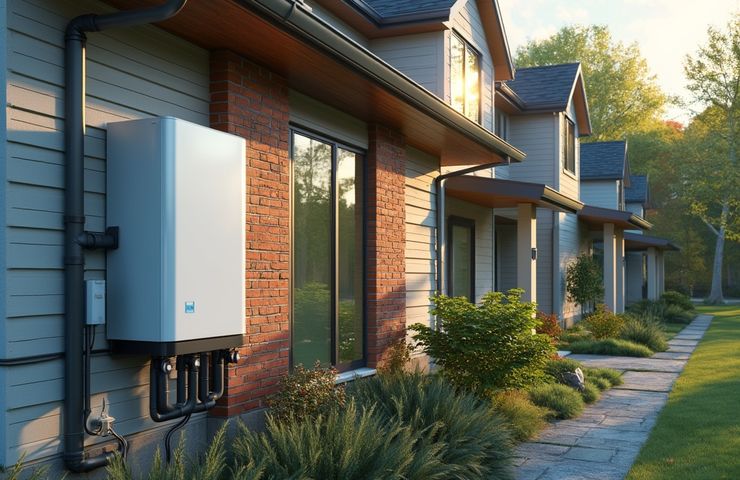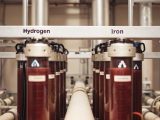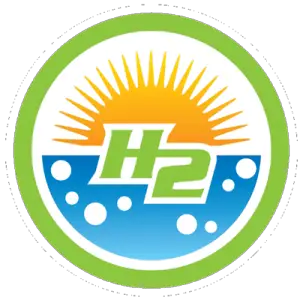
Hydrogen Fuel Cells: WATT Fuel Cell Brings Grid Resilience to Western Pennsylvania Homes
May 28, 2025Severe weather and our aging grid keep putting America’s energy vulnerabilities in the spotlight. Utilities across the country are searching for smarter, more reliable ways to keep the lights on—even when the weather doesn’t cooperate. That’s where WATT Fuel Cell steps in. This forward-thinking company, based in the U.S., has just wrapped up installations of its latest WATT HOME solid oxide fuel cell (SOFC) systems in Western Pennsylvania, teaming up with regional utility Essential Utilities to get it done.
Tackling Grid Challenges Head-On
Western Pennsylvania has seen increased attention on energy reliability in the face of extreme weather and aging infrastructure. Even relatively short outages matter—when it’s freezing, sweltering, or you’ve got a fridge full of groceries, every hour counts. That’s why WATT HOME SOFC systems are a game-changer. These home-based energy units kick in automatically during an outage, keeping the power on—quietly and cleanly. Unlike noisy diesel generators, they run off existing natural gas pipelines and don’t spew smoke or harmful emissions. Caine Finnerty, CEO of WATT Fuel Cell, explained the thinking behind it: “We’re tapping into natural gas systems we already have, cutting emissions, and giving communities safer, more reliable energy. It’s about finding workable paths toward cleaner power.”
How It Works: The Power of Solid Oxide Fuel Cells
At the heart of this tech is solid oxide fuel cell (SOFC) technology, ideal for homes and remote locations. SOFCs use natural gas, which the Appalachian Basin in Western PA has in abundance. Here’s the science in plain English: the system pulls methane from natural gas and turns it into hydrogen inside the unit. Then, at very high temperatures—between 750 and 1000°C—it uses a ceramic-based process to mix that hydrogen with oxygen and generate electricity. All of this happens with zero combustion. Thanks to WATT’s proprietary Additive Manufacturing Process (AMP), these systems are now more cost-effective and scalable. Plus, because there’s no burning involved, the process slashes emissions and helps push industrial decarbonization forward.
Strong Partnerships, Smart Business
None of this would be possible without a solid collaboration. Essential Utilities, the parent company of regional utility Peoples Natural Gas, is laser-focused on pushing sustainability and innovation front and center. Serving around 740,000 customers across Pennsylvania and Kentucky, Essential Utilities has positioned itself as a leader in embracing promising new tech that shields its customers from energy disruptions. “Working with WATT Fuel Cell gives us a real shot at building more resilient and forward-thinking energy services,” said a representative from Essential Utilities, driving home the companies’ shared commitment. From a business standpoint, it makes perfect sense—these fuel cells use infrastructure that’s already in place, so utilities don’t need to break the bank building new power plants or transmission lines. And with automation baked in, the systems also cut back on upkeep costs compared to traditional diesel backups.
A Step Toward Something Bigger
There’s something symbolically powerful about this rollout happening right in the heart of Western Pennsylvania—a region that helped build America’s industrial backbone with coal and steel. Now, it’s breaking new ground with cleaner, more reliable tech. WATT’s fuel cell systems not only keep homes powered during outages, they also have the potential to reduce household carbon emissions—pending final verification by third-party organizations. Given the widespread availability of natural gas in the region and a ready customer base, expanding this approach across other areas isn’t just possible—it’s likely. If it works this well in Pennsylvania, don’t be surprised to see utilities nationwide following suit, shifting toward a new energy future that blends centralized grids with distributed, cleaner generation. WATT has more pilot programs in the pipeline, with further rollouts expected from its field offices soon. Eyes across the hydrogen fuel cells industry and clean energy world are watching closely—after all, this local success story could very well become a national model.
What’s Next? Redefining Energy From the Ground Up
As the U.S. rethinks how it powers homes and businesses, innovations like the WATT HOME SOFC system shine a light on realistic, immediate solutions. Could these sleek fuel cell units become as common as home water heaters—especially in states that use a lot of electricity? There’s a real possibility. By building on familiar infrastructure and applying cutting-edge fuel cell technology, WATT is showing us what the shift to clean power could look like—not 10 or 20 years from now, but today. It’s not just about cleaner energy; it’s about smarter, more practical ways of getting there.



 With over 15 years of reporting hydrogen news, we are your premier source for the latest updates and insights in hydrogen and renewable energy.
With over 15 years of reporting hydrogen news, we are your premier source for the latest updates and insights in hydrogen and renewable energy.